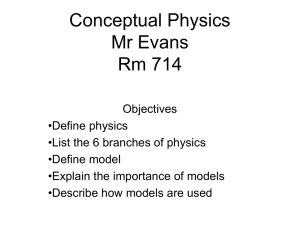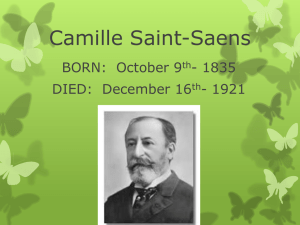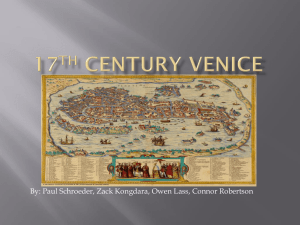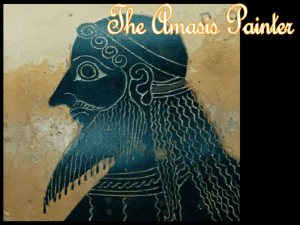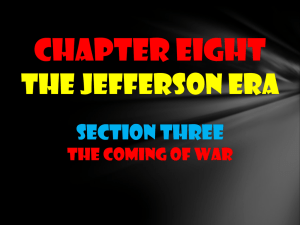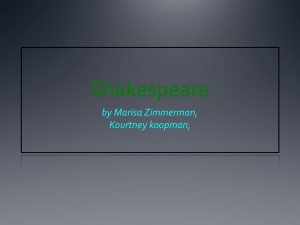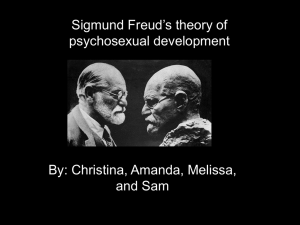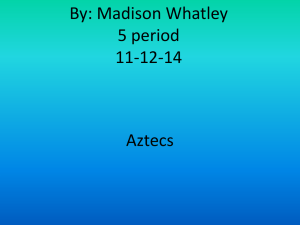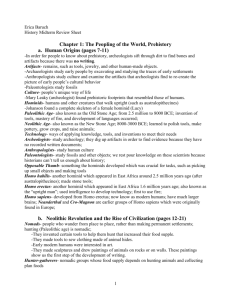King Henry VIII
advertisement
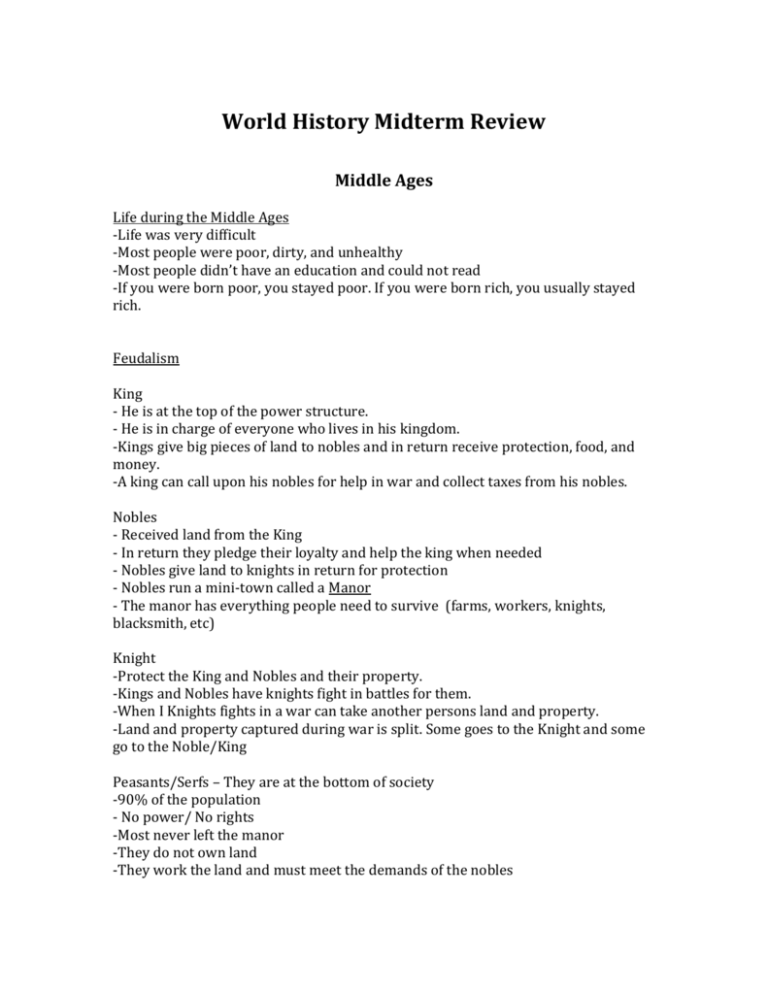
World History Midterm Review Middle Ages Life during the Middle Ages -Life was very difficult -Most people were poor, dirty, and unhealthy -Most people didn’t have an education and could not read -If you were born poor, you stayed poor. If you were born rich, you usually stayed rich. Feudalism King - He is at the top of the power structure. - He is in charge of everyone who lives in his kingdom. -Kings give big pieces of land to nobles and in return receive protection, food, and money. -A king can call upon his nobles for help in war and collect taxes from his nobles. Nobles - Received land from the King - In return they pledge their loyalty and help the king when needed - Nobles give land to knights in return for protection - Nobles run a mini-town called a Manor - The manor has everything people need to survive (farms, workers, knights, blacksmith, etc) Knight -Protect the King and Nobles and their property. -Kings and Nobles have knights fight in battles for them. -When I Knights fights in a war can take another persons land and property. -Land and property captured during war is split. Some goes to the Knight and some go to the Noble/King Peasants/Serfs – They are at the bottom of society -90% of the population - No power/ No rights -Most never left the manor -They do not own land -They work the land and must meet the demands of the nobles The Plague -A disease that started in China where it killed 6 million people -It made it to Europe traveling along trade routes -It spread from fleas that were on rats that traveled on trade ships -The Plague killed 1/3 to 2/3 of the people in Europe -People usually died within a week of catching the plague -Medicine to fight the plague never worked and sometimes made people sicker Religion -Catholicism (Catholic Church) was the religion of Europe -The Pope is the person in charge of the Church -The church was very wealthy and powerful, even more powerful than the Kings -The church was also corrupt -The Church was powerful because they were able to decide if people went to heaven or hell. No one else had this kind of power. -People were very religious in the middle ages. -Monks had an education and were able to read. Most other people did not. -A lot of the books were owned by the church. The Crusades -The Crusades were fought by Christians from Europe and Muslims from the Middle East. -The Muslims took control of Jerusalem, and the Christians wanted it back. -The Pope called on Europe to band together and take back the Holy land -The Christians won the first the Crusade but eventually lost control of Jerusalem. -Europeans are exposed to new technology, foods, and a better way of life. They decide to focus more on trade and take back what they see. Renaissance Review Humanism -Humanism was the philosophy followed by many during the Renaissance -Humanists believed that people should focus more on the world around them instead of the afterlife. -Humanists believed that if people worked hard and studied science and philosophy they could make their lives better -They studied what the ancient Romans and Greeks did and improved upon it. The Medici Family -The Medici were a wealthy and powerful family that controlled the city of Florence -They got rich from banking, mining, and political connections -There were several popes that were from the Medici Family -With their money, they supported many famous artists. Without their support much of the art from the Renaissance would never have been created. -They even supported Galileo Venice -The Renaissance started in Venice -Venice is known as the city of canals because it was built over water. People have to use boats to travel anywhere. -Venice got rich because it’s people were good at trading with other countries. Artists -The Mona Lisa was drawn by Leonardo Da Vinci. -The Sistine Chapel was painted by Michaelangelo. Scientific Revolution Scientific Method -The scientific method is a logical procedure for gathering and testing ideas. - 1) It begins with a problem or question arising from an observation. - 2) Scientists next form a hypothesis, or unproved assumption. - 3) The hypothesis is then tested in an experiment or on the basis of data. - 4) In the final step, scientists analyze and interpret their data to reach a new conclusion. - 5) That conclusion either confirms or disproves the hypothesis. Copernicus -Copernicus was the first to say that the Earth revolves around the Sun and not the other way around. -He waited until he was near death to publish his theory Galileo -Galileo proved all objects fall to the ground at the same speed, no matter how much it weighs. -He invented the Telescope -After Galileo, scientists realized they needed to use experiments more often to prove their theories -He got in trouble with the church because he tried to spread Copernicus’s theory about the Earth revolving around the Sun -His punishment was house arrest until he died Renee Decarte - He was a philosopher and mathematician - He believed that everything should be doubted until proven by math or reason. -He believed math was a great way to prove theories. -He invented Analytical Geometry -“I think therefore I am” The very fact that we can question our existence proves that we exist Sir Isaac Newton -Isaac Newton of England is considered the greatest and most influential scientist in history. -Newton made major contributions to the understanding of motion, gravity, heat, and light. He is said to have discovered the principle of gravity when he saw an apple fall to the ground. -Newton also created a system of advanced mathematics called calculus. The Protestant Reformation The Catholic Church -The church was corrupt -The most powerful institution in Europe -Pope Leo X (tenth) spent most of the Church’s money -To raise money, the church sold Church positions and Indulgences -Indulgences – These were passes people could by that would allow them to go directly to heaven. Martin Luther -He was a monk -He was upset with the corruption in the Church. The selling of Indulgences was the last straw - He wrote a list of complaints ( 95 Theses ) and posted it on the church door. - The pope asked him to take back what he said but he didn’t. Because of this he was excommunicated -The Ruler of the Holy Roman Empire, Charles V (fifth), told him to take back what he said, he didn’t. Because of this, he declared Martin Luther an outlaw and nobody could help him or they would be punished. -Martin Luther had many followers and his message spread quickly - His followers were called Protestants (it came from the word “protest”) Johannes Gutenberg -Gutenberg invented the printing press. It was a way of copying books quick and cheap. -Before the printing press books were copied by hand, this took months or years. -Because of the printing press, ordinary people were able to afford books. -More people had access to an education -The bible was the first book printed in large numbers using the printing press - The printing press allowed Martin Luther’s message to spread quickly all over Europe King Henry VIII (8th) -King of England, part of the Tutor family -Started off as a Catholic and was even rewarded with the title of “Defender of the Faith” because he persecuted Protestants and kept them out of England -He had 6 wives “Divorced, Beheaded, Died, Divorced, Beheaded, Survived” (we care about the first 3) -King Henry’s first wife was Catherine of Aragon -She was a Princess from Spain -She gave birth to Mary (Mary later became queen) -King Henry wanted a son, but had no luck with Catherine -He fell in love with Anne Boleyn and believed she could give him a son -King Henry wanted to divorce her to marry Anne Boleyn -The Pope wouldn’t allow it, so he changed the religion of England -King Henry’s second wife was Anne Boleyn -She gave birth to Elizabeth (Elizabeth later became queen) -She made many enemies -When she couldn’t give birth to a son, King Henry decided to get rid of her. -He accused her of cheating on him and had her beheaded -King Henry’s third wife was Jane Seymour -She gave birth to a son, Edward -She died two weeks later Difference between Martin Luther and King Henry VIII -Martin Luther challenged his religion because he had genuine concerns and wanted his religion to do the right thing -King Henry VIII changed his countries religion for selfish reasons. He wanted a divorce and to marry Anne Boleyn Explorers and the Columbian Exchange Ferdinand Magellan -He was the first explorer to reach the Pacific Ocean by going around South America -He died during his trip -The sailors that survived were the first to sail around the world Christopher Columbus -Italian, who sailed for Spain -Because of him the New World (The Americas) and the Old World (Europe, Asia, Africa) would never be the same New World -The New World was made up of North and South America -Mayans, Aztec, and Incas were empires in the New World New World Crops and Animals -Corn -Potatoes -Peanuts -Tomatoes -Squash -Pineapples -Avocados -Turkey -Llamas Old World Crops and Animals -Rice -Wheat -Sugar -Onions -Lettuce -Oats -Pears -Cows -Pigs -Horses Interaction between Old and New -The Spanish conquered the Aztec, Mayan, and Incas -They spread many diseases, including Small Pox -Small Pox killed at least half the local population and made it possible for the Spanish to conquer the locals -The Spanish also introduced Christianity to the New World
